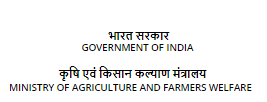CSV 29R (High grain
Background:
Unlike kharif sorghum, rabi sorghum despite having excellent grain quality, its productivity is
lower and has shown only marginal jump over the years due to monopoly of M 35-1 occupying
major area, is low yielding and susceptible to charcoal rot. High yielding (grain & fodder)
varieties will play major role in increasing productivity and also overall production levels of Rabi
sorghum. :
Technology Details:
CSV 29R is developed through one back cross followed by Pedigree breeding. It is developed
from the cross [(CSV216R x DSV5)] x CSV216R wherein CSV216R is a Selection from Dhulia
germplasm from Maharashtra, is a high yielding (grain & fodder) variety; DSV 5 is Selection from
Natte Maldandi of Gulbarga locality in Karnataka, is tolerant to charcoal rot, and is also high
yielding. Grain quality of both the varieties is acceptable with cream coloured, bold and lustrous
seeds. CSV 216R yields high under sufficient moisture levels. Both the parents are tolerant to
shoot fly. The cross yielded a segregant with combination of high yielding potential, tolerance
to pests and diseases, acceptable grain quality (roti quality) and fodder quality.
Name of crop/variety Rabi Sorghum; CSV 29R
Parentage (CSV 216R x DSV 5) x CSV 216R
Year of release
(CSC on CSN & RVAC)
2012-13
Gazette Notification Details S.O. 312 (E) dated 1.2.2013
Yield (kg/ha) 18-20 Q/ha (grain); 50 Q/ha (fodder)
Season Rabi
Maturity Group 125-130 days
Reaction to major diseases and
insects
It is tolerant to disease & pests
Other remarks • High grain and fodder yield over M 35-1
• Grains with good roti quality.
• It is tolerant to disease & pests
• Nutritionally superior to M 35-1 for crude protein,
soluble proteins, free amino acids and on par with
M 35-1 for other quality traits.
• It has recorded higher mineral elements content
than M 35-1
• Suitable for deep soils with adequate moisture
situations• Recommended for all rabi sorghum regions of
Karnataka, Maharashtra, Telangana & Andhra
Pradesh


